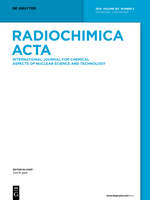
RADIOCHIMICA ACTA
Scope & Guideline
Fostering Innovation in the Study of Radioactive Interactions
Introduction
Aims and Scopes
- Radiochemical separations and extraction techniques:
The journal emphasizes studies on the separation and extraction of radionuclides using innovative methodologies, including solvent extraction, ion exchange, and adsorption techniques. These studies are crucial for nuclear waste management and resource recovery. - Synthesis and characterization of radiopharmaceuticals:
Research articles often focus on the development of new radiopharmaceuticals for medical applications, including cancer diagnosis and treatment. This includes the synthesis of radiolabeled compounds and their evaluation in preclinical studies. - Environmental radiochemistry:
The journal publishes studies that assess the levels and impacts of natural and anthropogenic radioactivity in various environmental matrices, contributing to our understanding of environmental health and safety. - Radiation shielding and dosimetry:
Papers frequently explore materials and methods for radiation shielding, as well as dosimetric studies to monitor and mitigate radiation exposure in various settings. - Theoretical modeling and computational studies:
The journal features articles that apply theoretical models and computational techniques to understand radiochemical processes, enhancing the predictive capabilities in radiochemistry.
Trending and Emerging
- Nanotechnology in radiochemistry:
There is a growing trend in the application of nanotechnology for the development of advanced materials and methods for radiochemical applications, particularly in the synthesis of nanocomposites for enhanced adsorption and detection of radionuclides. - Radiopharmaceutical development for targeted therapy:
Increased attention is being given to the development of targeted radiopharmaceuticals, particularly for cancer treatment, showcasing a shift towards personalized medicine in nuclear medicine. - Green chemistry approaches:
Emerging research emphasizes sustainable practices in radiochemistry, such as the use of eco-friendly solvents and materials for radionuclide extraction and separation, reflecting a broader trend towards sustainability in scientific research. - Advanced computational modeling:
There is a significant increase in the use of advanced computational techniques and modeling approaches to simulate radiochemical processes, enhancing the understanding of reaction mechanisms and improving the design of experiments. - Environmental monitoring and remediation:
An emerging focus on environmental applications highlights the importance of monitoring radioactive contaminants and developing remediation strategies, underscoring the societal relevance of radiochemistry in addressing environmental issues.
Declining or Waning
- Traditional nuclear chemistry:
There has been a noticeable decrease in publications focusing solely on traditional nuclear chemistry topics, such as basic studies of nuclear reactions without direct applications to modern challenges or technologies. - Basic studies in radiobiology:
Research articles dedicated to fundamental aspects of radiobiology, particularly those not linked to practical applications or advancements in therapeutic techniques, have become less frequent. - Historical reviews of radiochemistry:
There is a declining trend in the publication of extensive review articles that focus on historical perspectives in radiochemistry, as the field shifts towards more cutting-edge research and applications. - Conventional analytical methods:
Papers that solely discuss conventional analytical methods without novel enhancements or applications in radiochemistry are appearing less frequently, as the field moves towards more innovative and interdisciplinary approaches. - Sorption studies in non-radiochemical contexts:
Research focusing on sorption studies that do not explicitly relate to radionuclides or radiochemical processes is becoming less prominent, as the journal prioritizes topics that align closely with its core aims.
Similar Journals
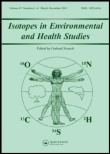
ISOTOPES IN ENVIRONMENTAL AND HEALTH STUDIES
Advancing Research on Isotopic Innovations for a Sustainable FutureISOTOPES IN ENVIRONMENTAL AND HEALTH STUDIES is a pivotal journal published by Taylor & Francis Ltd, focused on disseminating cutting-edge research within the fields of environmental science and health. With an established history since its inception in 1995 and a convergence period extending to 2024, the journal plays a significant role in advancing the understanding of isotopic applications in environmental and health-related studies. Currently classified within the Q3 category in Environmental Chemistry and Q2 in both Environmental Science (miscellaneous) and Inorganic Chemistry, it ranks favorably among its peers, holding a position that highlights its academic relevance and impact. Although the journal does not operate on an open access model, it remains a crucial resource for researchers and professionals seeking in-depth analysis and findings that underpin the relationship between isotopes and environmental processes. Its contributions cater to a diverse audience keen on exploring innovative methodologies and interdisciplinary approaches that foster sustainability and public health.
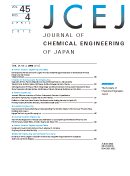
JOURNAL OF CHEMICAL ENGINEERING OF JAPAN
Bridging Tradition and Innovation in Chemical EngineeringJOURNAL OF CHEMICAL ENGINEERING OF JAPAN is a distinguished academic publication in the field of chemical engineering and chemistry, published by Taylor & Francis Ltd. With its ISSN 0021-9592 and E-ISSN 1881-1299, this journal has been a vital resource for researchers and practitioners since its inception in 1968 and continues to provide essential insights and advancements through 2024. The journal operates under an Open Access model as of 2023, promoting wider dissemination of research findings and encouraging collaboration within the global scientific community. Currently categorized in the Q4 quartile for both Chemical Engineering and Chemistry (miscellaneous) in 2023, it ranks within the lower percentiles of its respective fields, offering a platform for emerging scholars to publish their work and gain visibility. As part of Japan's academic landscape, it addresses numerous aspects of chemical engineering, fostering innovation and technical development that contribute to the industry's growth. Engaging with this journal is paramount for those looking to stay informed on the latest research trends and applications in chemical processes.
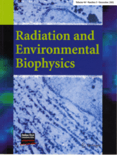
RADIATION AND ENVIRONMENTAL BIOPHYSICS
Pioneering Research for a Safer TomorrowRADIATION AND ENVIRONMENTAL BIOPHYSICS, published by SPRINGER, is a premier journal dedicated to advancing the understanding of the interactions between radiation and biological systems within environmental contexts. With an ISSN of 0301-634X and an E-ISSN of 1432-2099, this journal has established itself as a vital source of innovative research across multiple disciplines, including Biophysics, Environmental Science, and Radiation Studies, maintaining a significant presence since its inception in 1974. The journal is categorized within the Q3 in Biophysics and Q2 in both Environmental Science and Radiation for 2023, indicating its relevance and influence in these domains. Researchers and professionals will find the journal's rich content invaluable, offering insights that could impact public health, environmental policy, and radiation safety. Although it is not an open-access journal, RADIATION AND ENVIRONMENTAL BIOPHYSICS provides critical information through its rigorous peer-reviewed articles, making it an essential resource for academics and practitioners aiming to contribute to this evolving field.

ACTA CHIMICA SINICA
Elevating Chemical Research Standards GloballyACTA CHIMICA SINICA, published by SCIENCE PRESS, is a distinguished peer-reviewed journal in the realm of Chemistry, specifically focusing on general and miscellaneous chemistry fields. Since its inception in 1982, the journal has consistently contributed to the advancement of chemical research in China and beyond, maintaining a reputable standing within the academic community, evidenced by its 2023 Scopus ranking of #197 out of 408 in its category. With a current impact factor placing it in the Q3 quartile, ACTA CHIMICA SINICA aims to disseminate innovative research findings, covering a wide spectrum of topics within the discipline. Although it is not an open-access journal, it offers various access options through institutional subscriptions, ensuring that its high-quality content is available to a broad audience. Researchers, professionals, and students alike will find this journal a vital resource for keeping abreast of developments in the field and for contributing their own findings to an engaged scientific community.
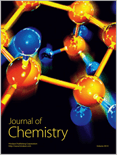
Journal of Chemistry
Elevating Chemical Research with Academic RigorJournal of Chemistry, published by Hindawi Ltd, serves as a critical platform for advancing knowledge in the field of chemistry, particularly in its miscellaneous sub-disciplines. With an impressive 2023 Scopus Rank of #123 out of 408 and positioned in the Q2 quartile, this journal exemplifies a robust academic rigor that appeals to researchers, professionals, and students alike. It features articles related to innovative chemical research and developments, catering to a diverse audience eager to contribute to the growing body of literature in the chemical sciences. The journal has been operational from 2013 to 2024, and its Open Access model ensures that findings are easily accessible to a global audience, fostering collaboration and knowledge sharing. With a commitment to quality and relevance, the Journal of Chemistry continues to play a significant role in shaping contemporary chemical research and education.

JOURNAL OF THE INDIAN CHEMICAL SOCIETY
Illuminating India's Contributions to Global Chemical ResearchJournal of the Indian Chemical Society, published by Elsevier, stands as a cornerstone in the field of chemistry, particularly representing the rich chemical research emanating from India.
With a significant history dating back to its establishment, this journal encompasses diverse disciplines including Drug Discovery, Electrochemistry, Inorganic Chemistry, Organic Chemistry, and Physical and Theoretical Chemistry, reflecting the evolving landscape of chemical sciences.
Despite being positioned in the Q3 category across multiple quarters, the journal demonstrates promising rankings in various chemistries, highlighting its commitment to advancing the knowledge and application of chemical sciences. While currently not available as an open access journal, the Journal of the Indian Chemical Society is dedicated to providing a platform for high-quality research that fosters innovation and collaboration among researchers, professionals, and students worldwide.
With its continuous publication from 1973 to the present, it serves as an essential repository for cutting-edge findings and developments in chemistry, striving to connect academia with industry and practice.
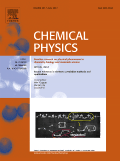
CHEMICAL PHYSICS
Pioneering Insights in the Realm of Physical Chemistry.CHEMICAL PHYSICS is a premier international journal published by Elsevier, dedicated to advancing the field of theoretical and experimental chemistry, particularly within the physical domain. Since its inception in 1973, this journal has served as a platform for disseminating cutting-edge research, fostering collaboration among researchers and professionals in the community. With a notable impact factor and recognized in the Scopus rankings, CHEMICAL PHYSICS holds esteemed positions in two categories: Q3 in Physical and Theoretical Chemistry and Q2 in Physics and Astronomy (miscellaneous). Published in the Netherlands, the journal features high-quality articles that cover a broad spectrum of topics, aiming to deepen understanding of chemical phenomena through innovative approaches. Although open access options are not currently available, the journal remains invaluable for researchers, students, and professionals seeking to stay informed about the latest developments in chemical physics. With convergence years extending from 1973 to 2025, CHEMICAL PHYSICS continues to be a significant contributor to the academic discourse in its field.

INDIAN JOURNAL OF CHEMICAL TECHNOLOGY
Advancing Innovation in Chemical TechnologyThe Indian Journal of Chemical Technology, published by the Natl Inst Science Communication-NISCAIR, is a pivotal platform for the dissemination of innovative research in the field of chemical technology. With an ISSN of 0971-457X and an E-ISSN of 0975-0991, this journal has been serving the academic community since its inception in 1994, and is set to continue through 2024. The journal holds a Q4 ranking in both the Chemical Engineering and Chemistry categories as of 2023, though it showcases a significant breadth of research, making it a valuable resource for both emerging and established scholars. Although it currently operates without an open-access model, the journal aims to facilitate knowledge exchange through rigorous peer-reviewed publications, allowing researchers and professionals to stay updated with the latest advancements and practices in chemical technology. Located in New Delhi, India, the journal not only contributes to national scientific dialogue but also plays a key role in the global conversation around chemical sciences by addressing unique challenges and innovations pertinent to the region.

NUCLEAR INSTRUMENTS & METHODS IN PHYSICS RESEARCH SECTION B-BEAM INTERACTIONS WITH MATERIALS AND ATOMS
Connecting Theory and Experiment in Nuclear ResearchNUCLEAR INSTRUMENTS & METHODS IN PHYSICS RESEARCH SECTION B-BEAM INTERACTIONS WITH MATERIALS AND ATOMS, published by Elsevier, is a pivotal journal in the fields of nuclear and high energy physics as well as instrumentation. With an ISSN of 0168-583X and an E-ISSN of 1872-9584, this journal has been a significant contributor to the scientific community since its inception in 1983. Covering an extensive range of topics related to beam interactions with various materials and atoms, the journal serves as an essential resource for researchers, professionals, and students alike. It holds a respectable Q3 category ranking in both instrumentation and nuclear high energy physics as of 2023, indicating its relevance and quality within these domains. While the journal currently does not offer open access options, its invaluable findings are accessible through numerous academic libraries and institutions. With the publication's emphasis on fostering advancements in experimental techniques, instrumentation developments, and theoretical insights, it undoubtedly plays a crucial role in the ongoing progress and innovation in the field.
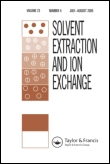
SOLVENT EXTRACTION AND ION EXCHANGE
Connecting Researchers to Evolving Chemical TechnologiesSOLVENT EXTRACTION AND ION EXCHANGE is a prominent academic journal dedicated to the field of Chemical Engineering and Chemistry, published by Taylor & Francis Inc. With its ISSN 0736-6299 and E-ISSN 1532-2262, the journal serves as a vital resource for researchers and practitioners seeking to advance their understanding and application of solvent extraction and ion exchange methodologies. Recognized for its impact, the journal holds respectable rankings, placed in Q2 for Chemical Engineering and Q3 for Chemistry as of 2023, reflecting its significant contribution to the academic community. The journal covers a wide range of topics from fundamental studies to innovative applications, enhancing both theoretical perspectives and practical implementations. With a robust readership spanning across the globe, SOLVENT EXTRACTION AND ION EXCHANGE not only facilitates the dissemination of critical research findings but also encourages interdisciplinary collaboration and knowledge sharing among scientists, engineers, and students alike. Researchers are invited to contribute to this esteemed journal, which works to illuminate the evolving landscape of chemical processing and separation technologies.